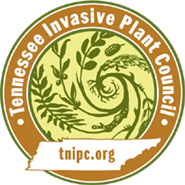Phragmites australis (Cav.) Trin. ex Steud.
Common Reed| Threat Level | Category |
|---|---|
| Established | Grass |

Description
Stem
A tall, perennial grass that can grow to over 15 feet in height, Common Reed forms a dense network of roots and rhizomes below ground which can reach several feet in depth. The plant spreads horizontally with rhizome runners which can grow 10 or more feet in a single growing season if conditions are optimal.Leaves
Leaves are elongate and typically 1 to 1.5 inches wide at their widest point.Flowers
Flowers form bushy panicles in late July and August and are usually purple or golden in color.Fruit
As seeds mature, the panicles begin to look “fluffy†due to the hairs on the seeds, taking on a grey sheen. Common Reed may produce thousands of seeds annually, seed viability is typically low although there appears to be a great deal of interannual variation in fecundity.Images
Photo: Leslie J. Mehrhoff, University of Connecticut, Bugwood.orgMore images of Phragmites australis
Life History
Preserved remains of native Phragmites that are 40,000 years old have been found in the southwest indicating that it is a part of the native flora of that region. In coastal areas, preserved rhizome fragments dating back 3000 to 4000 years have also been found in salt marsh sediments indicating that it is also native to these habitats. Native American uses of Common Reed include stems for arrow shafts, musical instruments, ceremonial objects, cigarettes, and both leaves and stems for constructing mats.Habitat
Common Reed's habitat includes tidal and nontidal brackish and freshwater marshes, river edges, shores of lakes and ponds, roadsides, disturbed areas. Dispersal to new sites is typically by seed except along rivers and shorelines where fragments of rhizomes may be washed down to establish new sites. Along roadsides, rhizomes fragments may also be transported by heavy machinery between sites.Origin and Distribution
USA (AL, AR, AZ, CA, CO, CT, DC, DE, FL, GA, HI, IA, ID, IL, IN, KS, KY, LA, MA, MD, ME, MI, MN, MO, MS, MT, NC, ND, NE, NH, NJ, NM, NV, NY, OH, OK, OR, PA, RI, SC, SD, TN, TX, UT, VA, VT, WA, WI, WV, WY),USA+ (PR)
Canada (AB, BC, MB, NB, NF, NS, NT, ON, PE, QC, SK)
